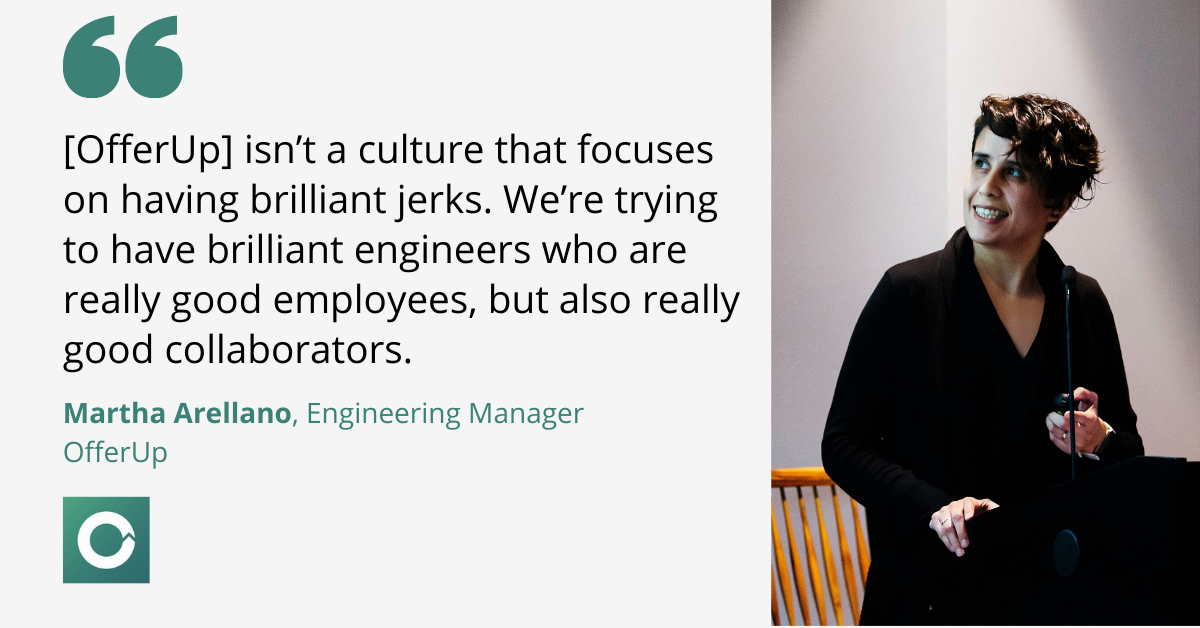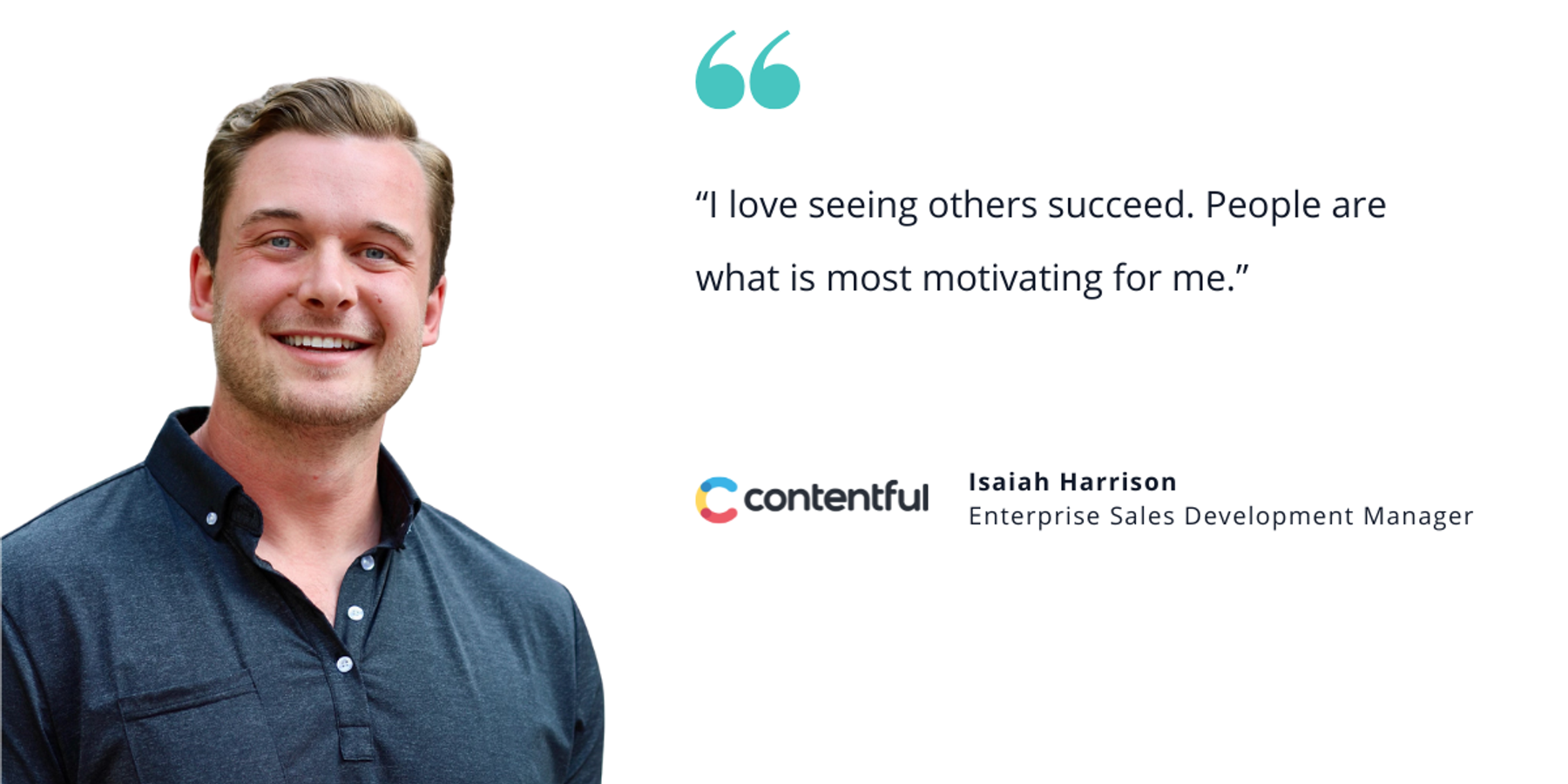Martha Arellano is A/B testing her succulents.
This isn't terribly out of character for the longtime programmer and technical manager who "grew up loving math and computers."
"It's very geeky, but I'm trying to figure out what are the best places to put them in my house!" explains Martha.
It's not just plants that Martha likes helping to grow. Throughout her career, Martha has been both an individual contributor and a manager. As an Engineering Manager at OfferUp, she's responsible for the career development of a team of backend engineers.
"Management isn't only about assigning tasks. It's about helping people grow," says Martha.
We sat down with her to hear more about her experience emigrating from Puebla, Mexico, to Seattle to work for some of the biggest tech companies, her transition from individual contributor to a people manager, how she developed her approach to management, and what she recommends other managers do to look out for their teams' long-term growth.
Pursuing the Right Balance
Martha found programming because she liked math and didn't want to be a professor. She dreamed about working for Microsoft—and had to pinch herself when they recruited her.
"My internship at Microsoft was when I realized that this is what I want to do," she says. "It was very different to work as a full-time employee, developing software. In Mexico, the opportunities would've been more around consulting."
She stayed there long enough to start managing a small team, first a few contractors and then up to three developers. "I enjoyed helping other people grow, investing in them, and being a leader not only on the technical side," explains Martha.
At that phase of her career, she didn't want to lean away from technical responsibilities completely. She made the tough decision to back away from being a manager to work on a project that she was more passionate about, even when that meant returning to being an individual contributor.
She worked as a senior backend engineer at Microsoft and Google before taking a cloud architect role at a start-up where she had a chance to scale a team again. But that company was focused on live events and didn't fare so well during the pandemic. When someone in her network told her about OfferUp, a Bellevue, WA start-up on a mission to build a mobile marketplace that was simple and trustworthy, Martha jumped at the opportunity to join their team as an engineering manager.
Breaking Management Down
The right job for Martha had to have that mix of technically interesting problem-solving and the challenge of supporting a team. But how did she show OfferUp that she was the right candidate for the job?
She talked about her three-pronged approach to engineering management. Martha's management approach is people, process, and technology.
"The people part is about making sure that we've fostered the right environment for them because that's when they can make their best contributions," explains Martha. "The process part: I like to get teams to take ownership of the process to help make things better for them. It should be around what the people like and what the team finds works best. We are always going to be open to trying something new, and we'll see, after some time, if it works." (Hi, A/B testing!)
The third and final part continues Martha, is technology. "It's important that we have the right technical expertise on the team and that people are getting the right technical feedback—that's the cycle that keeps people improving."
On the job, Martha has found that breaking her role into those three components helps give her team the right mix of support and autonomy that allows them to dig into challenging problems. "You set up the principles, but also the guard rails," explains Martha. "That way engineers can go and build within that—and deliver."
That's a tricky balance to strike in a start-up, where there are always competing goals. What's needed right now, on one side, and what's needed long term, on the other. "We're still producing the best system or service that we can write," she says. "That's always the goal of an engineer at heart."
3 Tips for Engineering Managers
Unfortunately, the way Martha learned how to be a good manager was by having bad ones.
"I, unfortunately, learned how I don't want to be managed," said Martha. Now, she takes a thoughtful approach to create an environment where everyone can succeed—and has advice for other managers who want to do the same:
1. Give ongoing feedback. "If it's just at reviews once a year, that's not helpful," says Martha, adding that giving regular feedback "shows the employee you care about their growth and development and allows them to bridge gaps before their review." She does formal check-ins every few months and gives ongoing feedback and reflections on a project-by-project basis.
2. Think about your own Emotional Intelligence (EQ) and how you're improving it. "That goes beyond taking management classes and means becoming more aware of your blind spots and dedicating yourself to improving them. This is especially important when it comes to understanding your unconscious bias and becoming a better ally," says Martha. She recommends the "5 Ally Actions" newsletter for pointed, practical ways to be more inclusive at work.
An example of what she means? Removing language like "whitelisting" and "blacklisting" from your vocabulary. "We don't have an equivalent term in Spanish. When I learned about that concept and what it meant—an allow list and block list—it was like, 'Hey, we should be conscious about implications this has; it's not okay to keep using those terms.' Everyone should be more aware of the perception and hurtful impact of these terms, and managers should be allyship champions.".
3. Learn how to communicate with different people. The way you forge a relationship with one team member might not work with another. You need to communicate effectively with your direct reports, cross-functional teams, and management peers, says Martha. "You need to understand how to reach people," she explains. "That's been hard during a remote year. Small changes can make an impact. Stand-ups are often the only time each day where a whole team interacts. Incorporating 'parking lot' sections into our team stand-ups has helped the team feel more connected and works as a team-building opportunity."
Applying the three tips is easier to do if you work for a company that has a supportive culture, says Martha. "Some companies are explicit about recognizing the value there, and embedding those values in their interview experience, their website, and through the onboarding process," she says. "And there are companies that don't care about that at all. [OfferUp] isn't a culture that focuses on having brilliant jerks. We want people who embody our DNA and Operating Principles and have the skills to perform their role successfully. That means people who are driven, neighborly and adaptable. Good people who genuinely care about the people they work with, our customers, clients, and the product we're building."
If OfferUp sounds like a place you'd love to work, check out their open roles!




